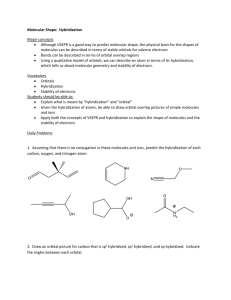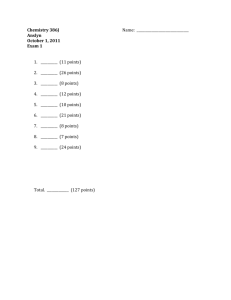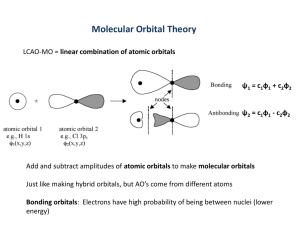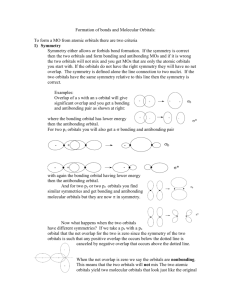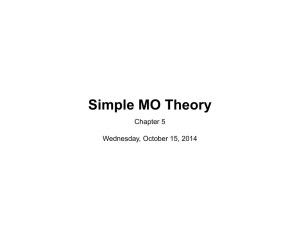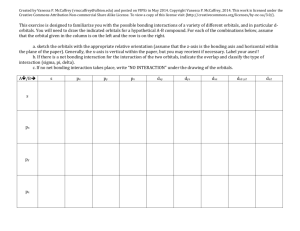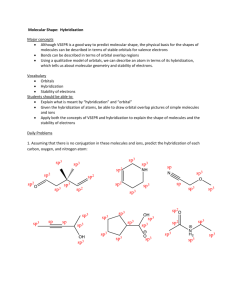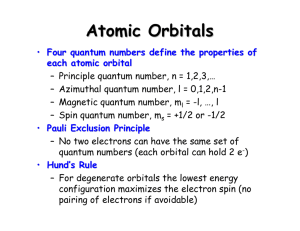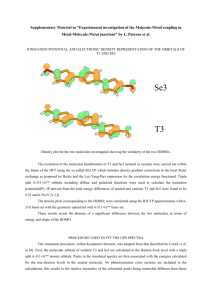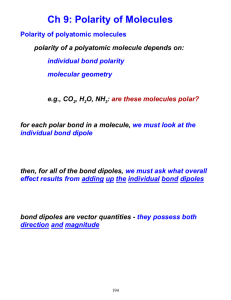1 - Imperial College London
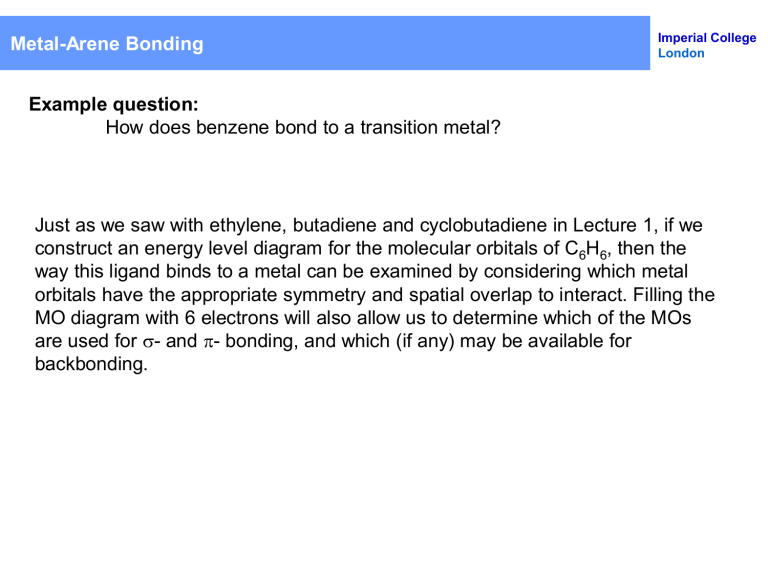
Metal-Arene Bonding
Example question:
How does benzene bond to a transition metal?
Imperial College
London
Just as we saw with ethylene, butadiene and cyclobutadiene in Lecture 1, if we construct an energy level diagram for the molecular orbitals of C
6
H
6
, then the way this ligand binds to a metal can be examined by considering which metal orbitals have the appropriate symmetry and spatial overlap to interact. Filling the
MO diagram with 6 electrons will also allow us to determine which of the MOs are used for s
- and p
- bonding, and which (if any) may be available for backbonding.
Benzene molecular orbitals
4
2
6
1
5
3
Imperial College
London
Overlap with metal s, p and d orbitals
Imperial College
London
Remember that the z-axis is formally chosen to contain the principal axis (in this case the C
6 rotational axis perpendicular to the ring).
z x
1 Can overlap with s , p z and d z 2 orbitals y
2 Can overlap with p x and d xz orbitals
3 Can overlap with p y and d yz orbitals
Overlap with metal s, p and d orbitals y z x
4
5
6
Imperial College
London
Can overlap with the d x 2 -y 2 orbital
Can overlap with the d xy orbital
Unable to overlap with any metal orbital
Further problems
Imperial College
London
By analogy to the MO diagram for ferrocene, you should now be able to construct a similar energy level diagram for ( h
6 -C
6
H
6
)
2
Cr. As with ferrocene you may assume that the d z 2 orbital actually overlaps quite poorly with the benzene p z therefore remains non-bonding.
orbitals and
